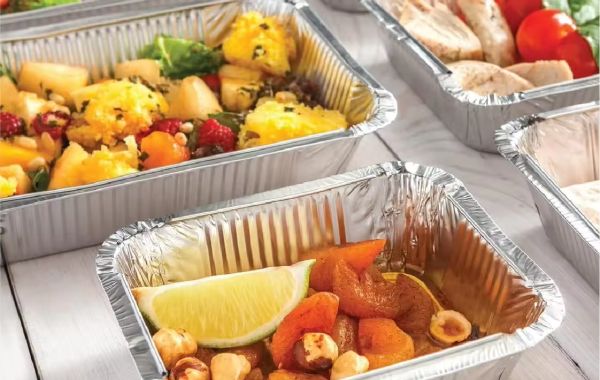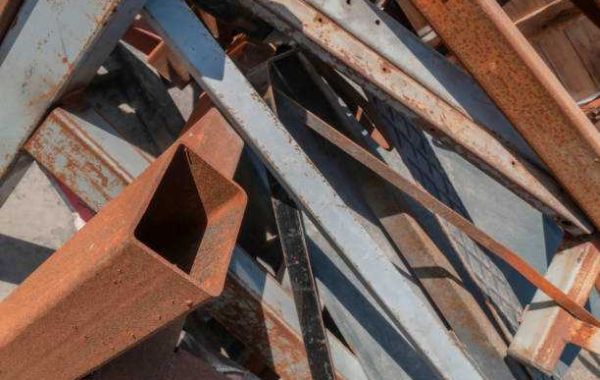Introduction
Aluminum foil containers are ubiquitous in modern packaging, offering versatility, durability, and recyclability. These containers are widely used in food service, pharmaceuticals, and industrial applications. The manufacturing process is a fascinating blend of precision engineering and innovative techniques, ensuring high-quality products that meet diverse needs.
Raw Materials
The journey begins with selecting the right aluminum alloys. Typically, alloys like 3003 or 8011 are used due to their excellent formability and corrosion resistance. The raw materials must adhere to strict quality standards, ensuring they are free from impurities and defects that could compromise the final product.
Raw Material Preparation
Before manufacturing, aluminum sheets undergo sorting and cleaning. This step removes any surface contaminants or oxides. Pre-treatment processes, such as annealing, are often employed to enhance the material’s malleability, making it easier to shape during subsequent stages.
Material Rolling
The cleaned aluminum sheets are then subjected to cold rolling. This process reduces the thickness of the sheets while improving their strength. Precise calibration ensures the sheets achieve the desired thickness, typically ranging from 0.03 to 0.2 millimeters.
Cutting and Shaping
Next, the aluminum sheets are cut into blanks using precision cutting techniques. The blanking process ensures uniformity, with each blank sized appropriately for the final container shape. This stage demands accuracy to minimize material waste and ensure consistency.
Forming the Containers
The heart of the process lies in stamping and molding. Hydraulic or mechanical presses are used to shape the blanks into containers. Temperature and pressure are carefully controlled to achieve the desired form without compromising the material’s structural integrity.
Surface Finishing
Once formed, the containers undergo surface finishing. Polishing and smoothing eliminate any rough edges or imperfections. Optional coatings, such as anti-stick or barrier layers, may be applied to enhance functionality for specific applications.
Quality Checks
Quality assurance is paramount. Each container is subjected to rigorous testing, including dimensional accuracy and strength assessments. These checks ensure the containers meet industry standards and customer expectations.
Packing and Labeling
Finished containers are packed using automated systems to maintain hygiene and efficiency. Custom labeling options allow manufacturers to cater to branding needs, making the containers ready for market distribution.
Environmental Considerations
Aluminum foil containers are inherently recyclable, contributing to sustainability. Manufacturers are increasingly adopting eco-friendly practices, such as reducing energy consumption and incorporating recycled materials, to minimize their environmental impact.
Innovations in Manufacturing
The industry is embracing advanced automation and smart manufacturing systems. These innovations enhance precision, reduce waste, and improve overall efficiency, paving the way for a more sustainable future.
Applications of Aluminum Foil Containers
From takeout food packaging to sterile pharmaceutical containers, these products are indispensable. Their heat resistance and durability make them ideal for a wide range of uses.
Customization Options
Manufacturers offer extensive customization, including varying sizes, shapes, and designs. This flexibility ensures the containers meet specific customer requirements, from individual consumers to large corporations.
Global Market Trends
Emerging markets are driving demand for aluminum foil containers, with Asia-Pacific leading the way. Regional manufacturing hubs are expanding to cater to this growing need, fueled by urbanization and changing consumer habits.
Challenges in Manufacturing
Fluctuating raw material costs and maintaining production consistency are significant challenges. Manufacturers must navigate these issues while ensuring quality and profitability.
Health and Safety Standards
Compliance with food-grade standards is crucial. Manufacturers also prioritize worker safety, implementing strict protocols to prevent accidents and ensure a safe working environment.
Energy Efficiency in Production
Efforts to reduce energy consumption are ongoing. Many foil container manufacturers are transitioning to renewable energy sources, reducing their carbon footprint and contributing to global sustainability goals.
Future of Aluminum Foil Container Manufacturing
The future looks promising, with a focus on sustainable practices and technological integration. Innovations like IoT and AI are set to revolutionize the industry, enhancing efficiency and reducing environmental impact.
Economic Impact
The manufacturing of aluminum foil containers bolsters local economies, creating jobs and fostering industrial growth. This sector plays a vital role in supporting related industries, such as logistics and retail.
Conclusion
The aluminum foil container manufacturing process is a testament to human ingenuity and technological advancement. As the world moves towards sustainability, these containers will continue to play a pivotal role in packaging solutions, offering both practicality and environmental benefits.








